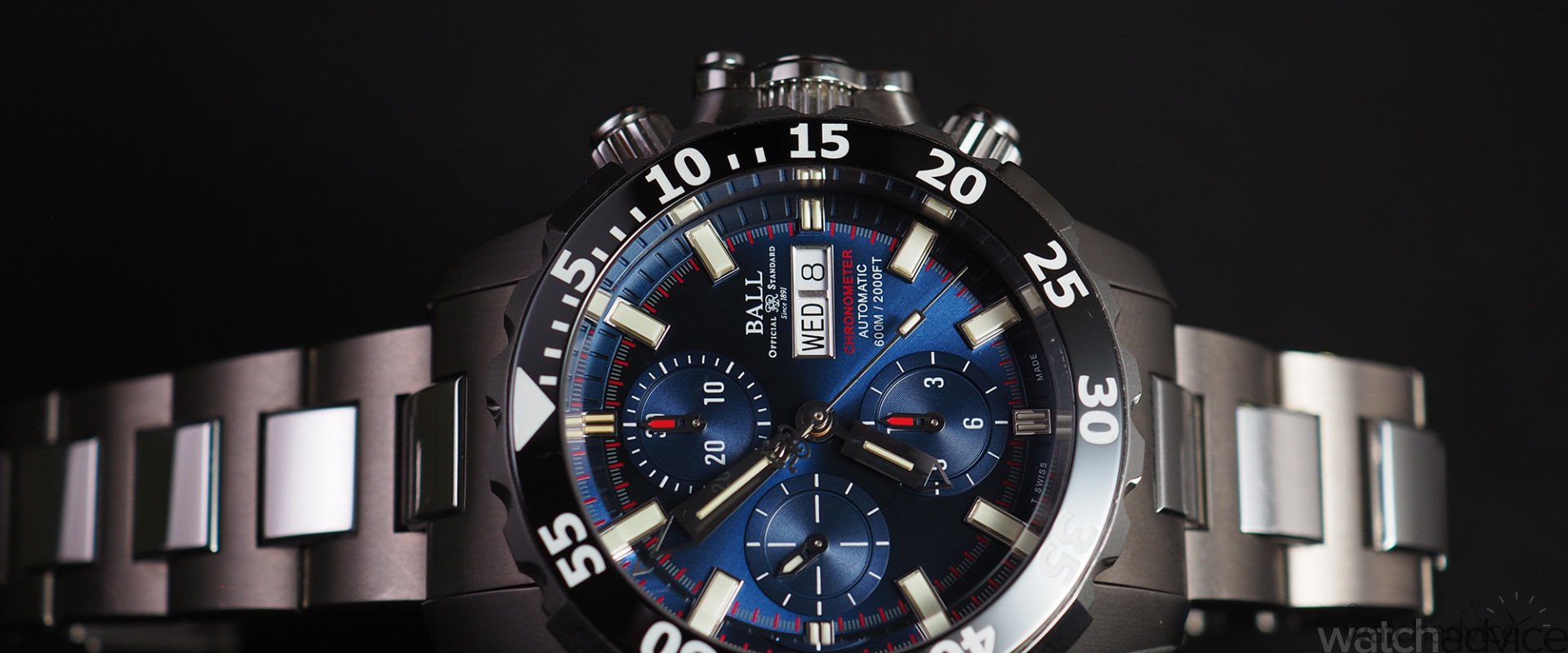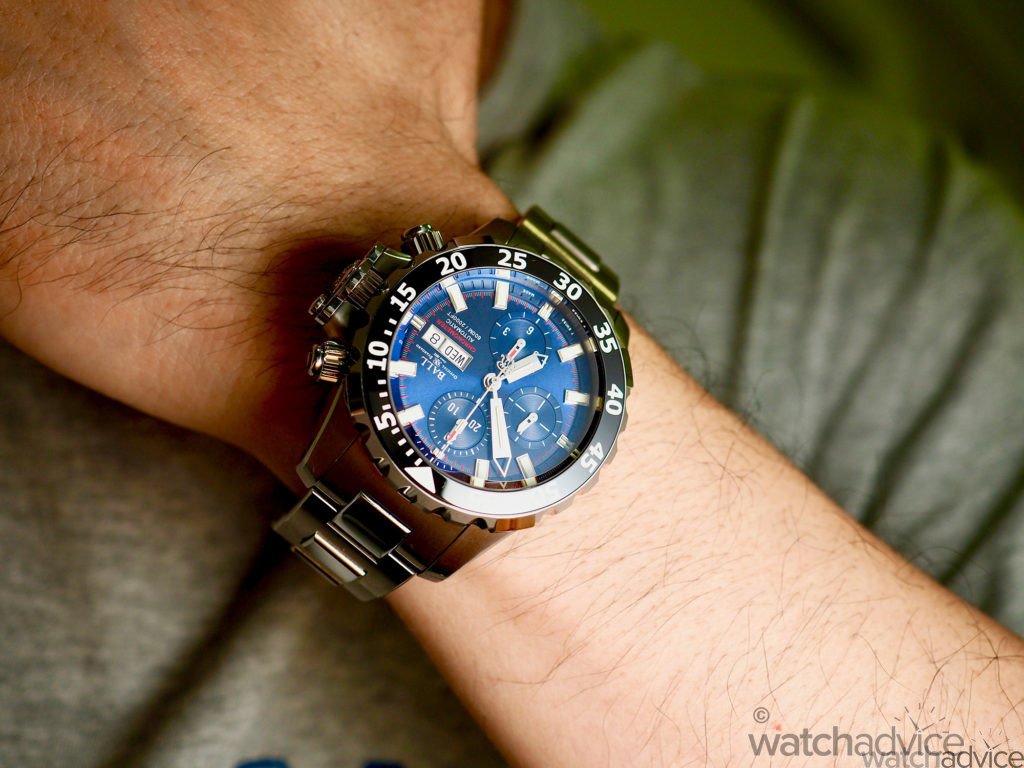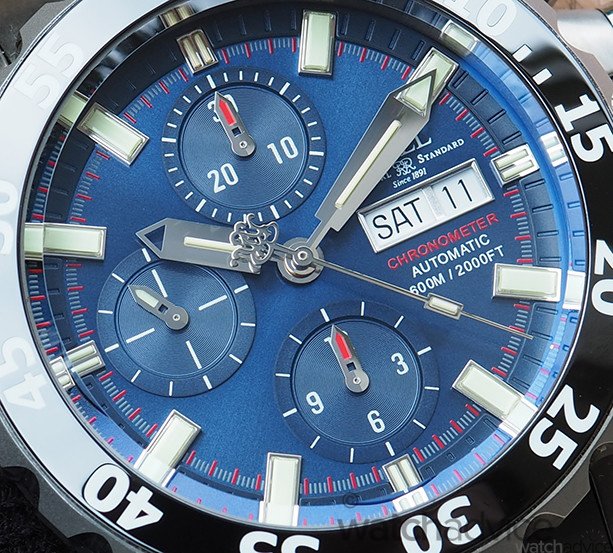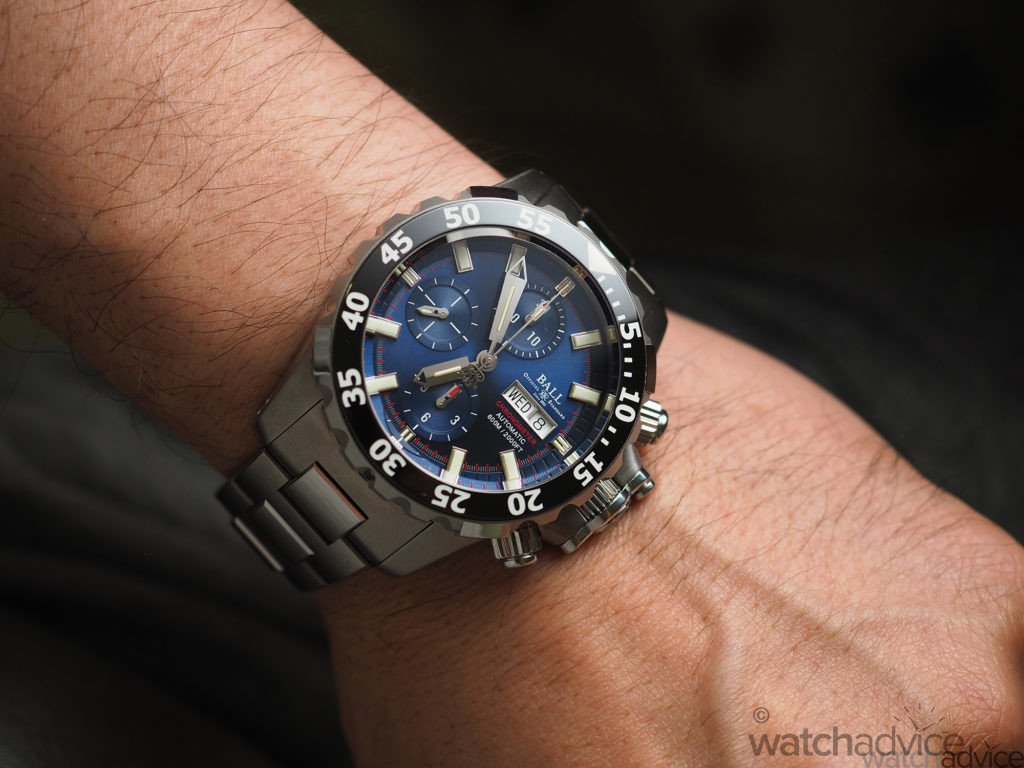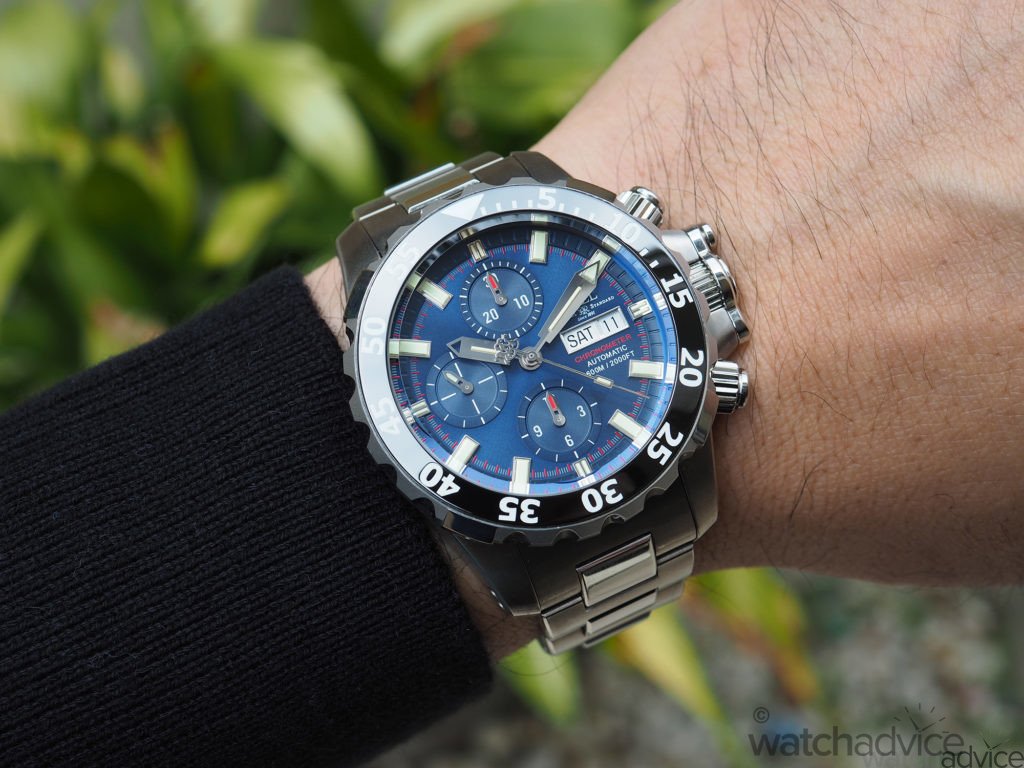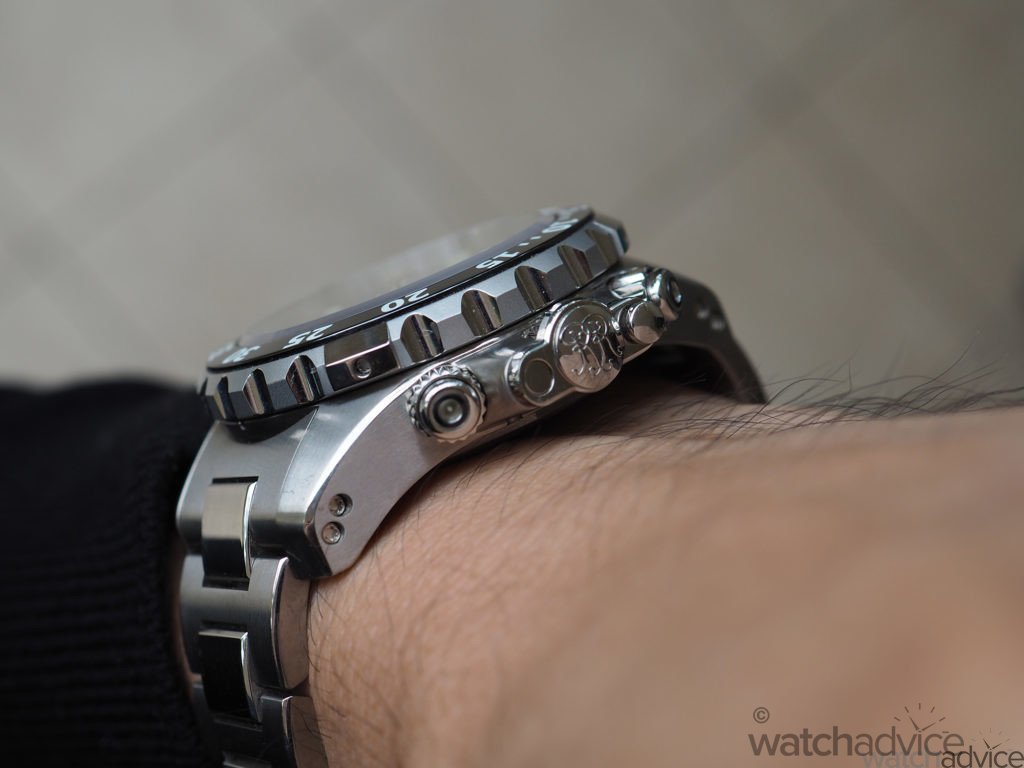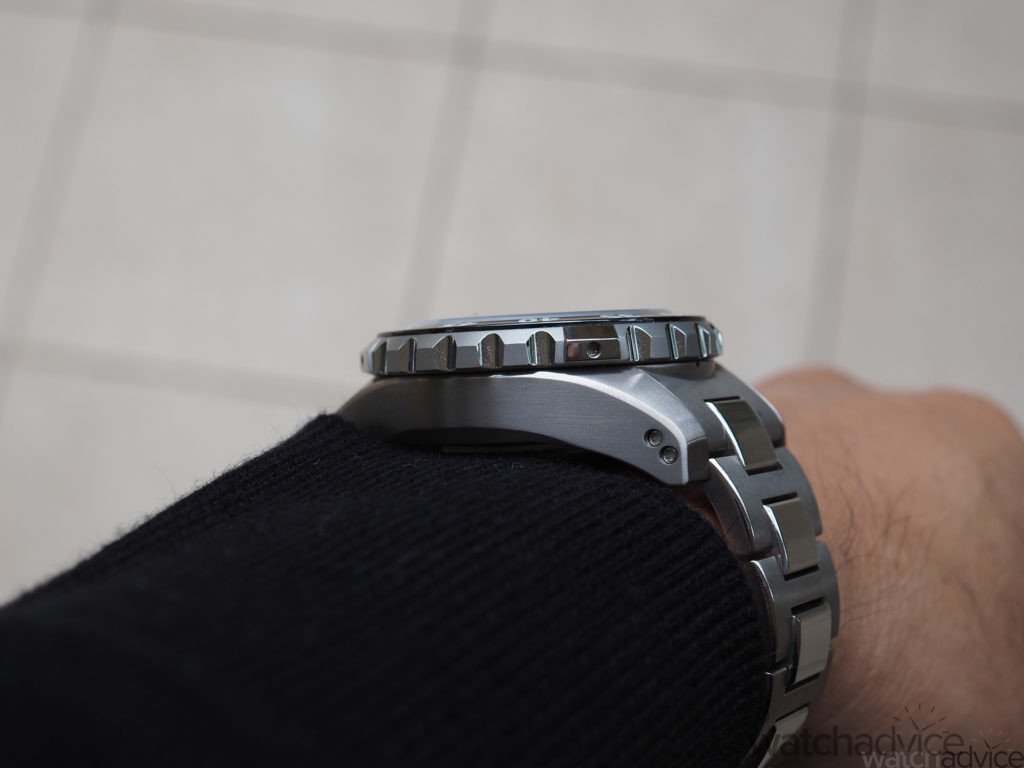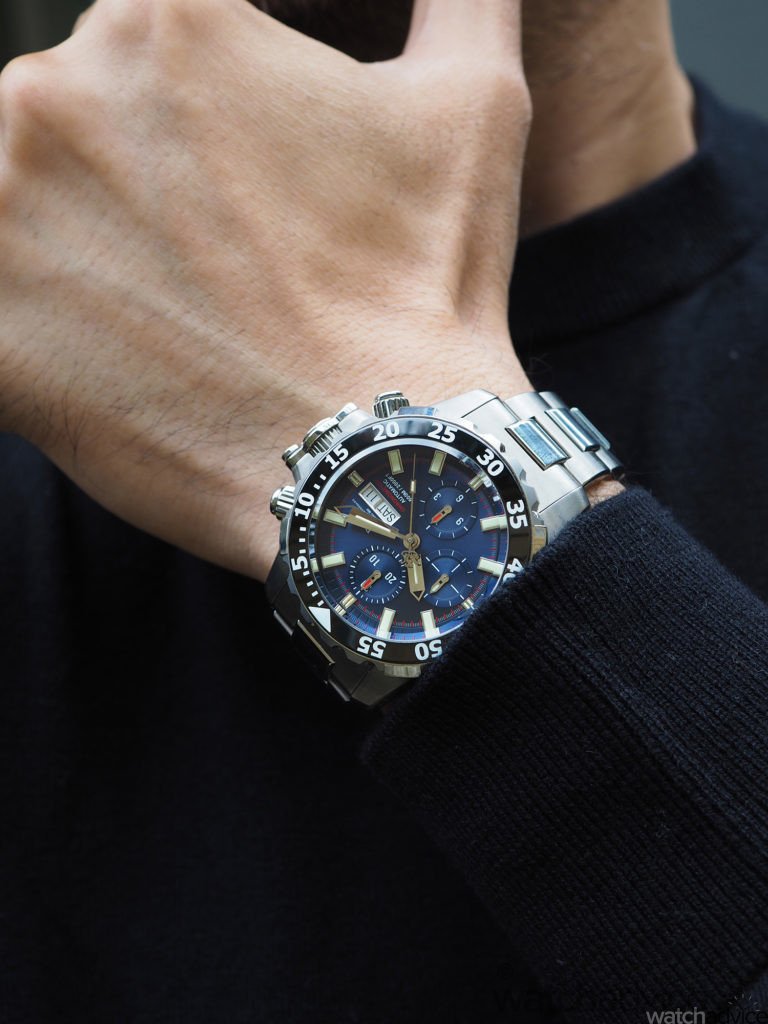What we love:
- Proper solid built watch overall
- Clasp feel very secure on the wrist
- GAS Tube Lume is sensational at night
What we don’t love:
- Thickness, at 17.3mm some may find this hard to wear under the cuff
- Some may find the crown guard to be fiddly
- Some may find the Clasp can dig into the wrist
Overall rating: 7.5/10
Value for money: 7.5/10
Wearability: 7/10
Design: 7/10
Build quality: 8.5/10
Once upon a time, if you wanted a mid-priced automatic chronograph, chances are it’ll be powered by the ETA 7750 (or one of its close siblings), and the only choice really was the brand and the style. The movement was so ubiquitous that it was literally everywhere and fitted to almost everything. The dial layout was distinctive, and the rotor wobble was familiar, instantly giving away the engine within.
Don’t get me wrong. This wasn’t a bad thing. The movement is a low key high achiever, easily running within COSC specs day in and day out without so much as breaking a sweat. It is a tough, durable, workhorse movement, designed from the beginning as an integrated chronograph, making it very efficient and the “almost 2 days” of power reserve is a testament to that fact. You might scoff at the power reserve but keeping in mind that this movement has been around since the 70s, largely unchanged, and 2 days was the norm for many decades. Plus, if you wear it every day, then it’s really a moot point.
The only thing that might generate heated debate is how much value you attach to a watch powered by the 7750. Given that you could find it anywhere from a Tissot to an Omega, both part of the Swatch Group, and to other brands such as Breitling, IWC, Chopard, and even Franck Muller. But that’s not the end of it, as the movement is so good that many complication modules could be mounted and still be ridiculously reliable.
One of the most complicated modules is the perpetual calendar split-second chronograph with tourbillon and minute repeater from IWC in their grande complications watch, the 125th anniversary Il Destriero Scafusia (the “Warhorse from Schaffhausen”). Granted it’s probably more than just a module, but a thorough modification, whilst still using the movement as a base.
Nowadays we are swamped with a plethora of choices when it comes to automatic chronographs. A few, more budget-conscious versions might still have their roots firmly in the 7750 base (Sellita versions) but further up the pricing ladder, you also have the Breitling B01, shared with Tudor, the Tag Heuer 02, The Omega 9300 series, Hublot Unico, Zenith El Primero, IWC 69370 (which could be argued that it is still very loosely based on the 7750 architecture). La Joux-Perret also makes chronograph movements that are more or less based on the 7750. And we are barely scraping the surface of the depth of influence this movement has. But this is really a massive digression, so let’s get back to the watch on hand – the Ball Engineering Hydrocarbon NEDU.
If you do want a bit more in-depth analysis on the 7750 and its variants, let us know down in the comments section below and we can look at potentially doing a series in tribute to this absolute legend of an unsung hero.
Oh and before you all leave comments about the ETA 2894-2.. this is a DD module on top of 2892. In my books, it’s not a true chronograph.
NEDU stands for Nacy Experimental Diving Unit and describes its mission as: “The Navy Experimental Diving Unit tests and evaluates diving, hyperbaric, and other life-support systems and procedures, and conducts research and development in biomedical and environmental physiology. NEDU provides technical recommendations based upon knowledge and experience, to Commander, Naval Sea Systems Command to support operational requirements of our armed forces.” Therefore, for a watch to live up to its name, it’s gotta withstand the conditions right? So, obviously, the Ball calibre RR1402-C which powers this watch is based on the ETA 7750 chronograph movement, meaning it’ll be reliable and accurate. On top of that, you get all relevant Ball technologies built-in, including shock resistance to 7500G, Anti-magnetic to 4800A/m, water-resistance of 600m with a patented helium release crown, crown protection system, and on the bracelet, the patented folding clasp and diver extension system.
Unlike many other diving watches where it is often suggested the chronograph aren’t used underwater, here you are encouraged to activate and operate the chronograph underwater. Granted many of us are possible desk divers but hey, at least the option is there, just like using your Land Rover Disco on school runs. Just in case you need to take a shortcut through the national park…
Now, this is not a small watch, and although the lighter titanium does help, it doesn’t hide the bulk. Nor the height. At 17.3mm it’s not going to be a watch you wear with a suit. But assuming you’re in the market for this type of diving chronograph, your drawer is probably already full of other watches in varying sizes and styles.
I guess the question is whether this is a watch for you? It’s a solidly built piece with a reliable workhorse movement. It comes with all the above-mentioned Ball technologies and phenomenon lume. It’s not a subtle watch so you’ll need to have the wrist for it. Suit and tie are out of the question. Downsides? The fiddly crown guard and screw-in pushers might annoy some, and the height of the watch means you’ll need to keep your distance from walls, corners, doors, etc. Otherwise, it’s a heck of a lot of watch for the money.
Reference: Ball DC3226A-06
Specification:
- Case: 42 mm and thickness of 17.3mm
- Case Material: Grade 5 Titanium
- Dial: Blue
- Crystal: 3.7mm anti-reflective sapphire crystal
- Water resistance: 600 meters
- Movement: Automatic caliber BALL RR1402-C (Chronometer certified COSC)
- Power reserve: 44 Hours
- Strap: Stainless steel and titanium bracelet with patented folding buckle & extension system or rubber strap with standard buckle


